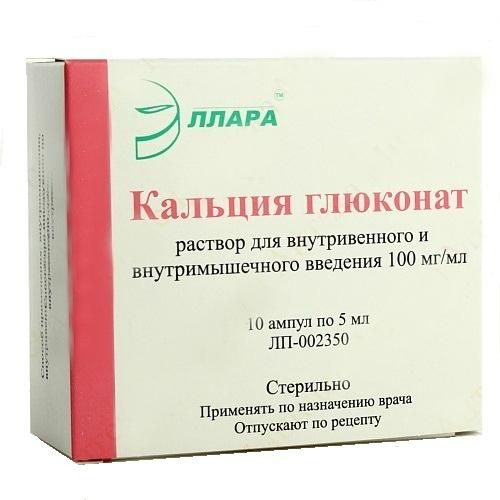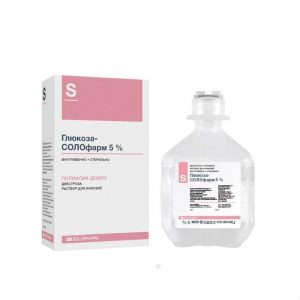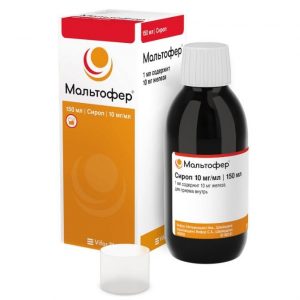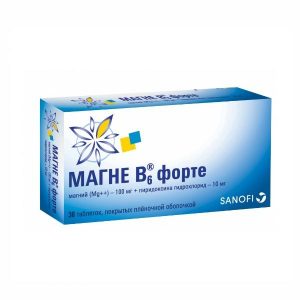Description
Release form
Injection 10%
Packing
10 ampoules of 5 ml.
Pharmacological action
Calcium is a macrocell involved in the formation of bone tissue, the process of blood coagulation, is necessary to maintain stable cardiac activity, the processes of transmission of nerve impulses. Improves muscle contraction during muscular dystrophy, myasthenia gravis, reduces vascular permeability. When iv is administered, calcium causes excitation of the sympathetic nervous system and increased adrenaline excretion of adrenaline has a moderate diuretic effect.
Contraindications
Hypercalcemia, severe hypercalciuria, severe renal failure, tendency to thrombosis, hypersensitivity to calcium gluconate.
Special instructions
Caution is used in patients with slight hypercalciuria, with minor impaired renal function or with a history of urolithiasis in these cases, the level of urinary calcium excretion should be regularly monitored. Patients with a tendency to form calculi in the urine are advised to increase the amount of fluid consumed. It is not recommended to introduce IM children. Calcium gluconate with simultaneous use reduces the effect of calcium channel blockers. In / in the introduction of calcium gluconate before or after verapamil reduces its hypotensive effect, but does not affect its antiarrhythmic effect. Under the influence of colestyramine, calcium absorption from the gastrointestinal tract decreases. With simultaneous use with quinidine, it is possible to slow intraventricular conduction and increase the toxicity of quinidine. During treatment with cardiac glycosides, parenteral administration of calcium gluconate is not recommended, due to the increased cardiotoxic effect. With the simultaneous oral administration of calcium gluconate and tetracyclines, the effect of the latter may decrease, due to a decrease in their absorption.
Composition
1 ml contains 0, 1 g calcium gluconate
Dosage and administration
Calcium Gluconate solution is administered intravenously and intramuscularly in 5-10 ml of a 10% solution daily or every other day as indicated. Children, depending on age, are injected into a vein from 1 to 5 ml of a 10% solution every 2-3 days.
Side effects
With intravenous administration in rare cases, heart rhythm disturbances, nausea, vomiting, diarrhea, and slow heart rate are possible.
Drug Interactions
Calcium gluconate, while used, reduces the effect of calcium channel blockers. In / in the introduction of calcium gluconate before or after verapamil reduces its hypotensive effect, but does not affect its antiarrhythmic effect. Under the influence of colestyramine, calcium absorption from the gastrointestinal tract decreases. With simultaneous use with quinidine, it is possible to slow intraventricular conduction and increase the toxicity of quinidine. During treatment with cardiac glycosides, parenteral administration of calcium gluconate is not recommended, due to the increased cardiotoxic effect. With the simultaneous oral administration of calcium gluconate and tetracyclines, the effect of the latter may decrease, due to a decrease in their absorption.
Storage conditions
In the dark place.
Term hodnosty
5 years
Deystvuyuschee substances
calcium gluconate
Form of Treatment
simply entails dlya inaektsiy




